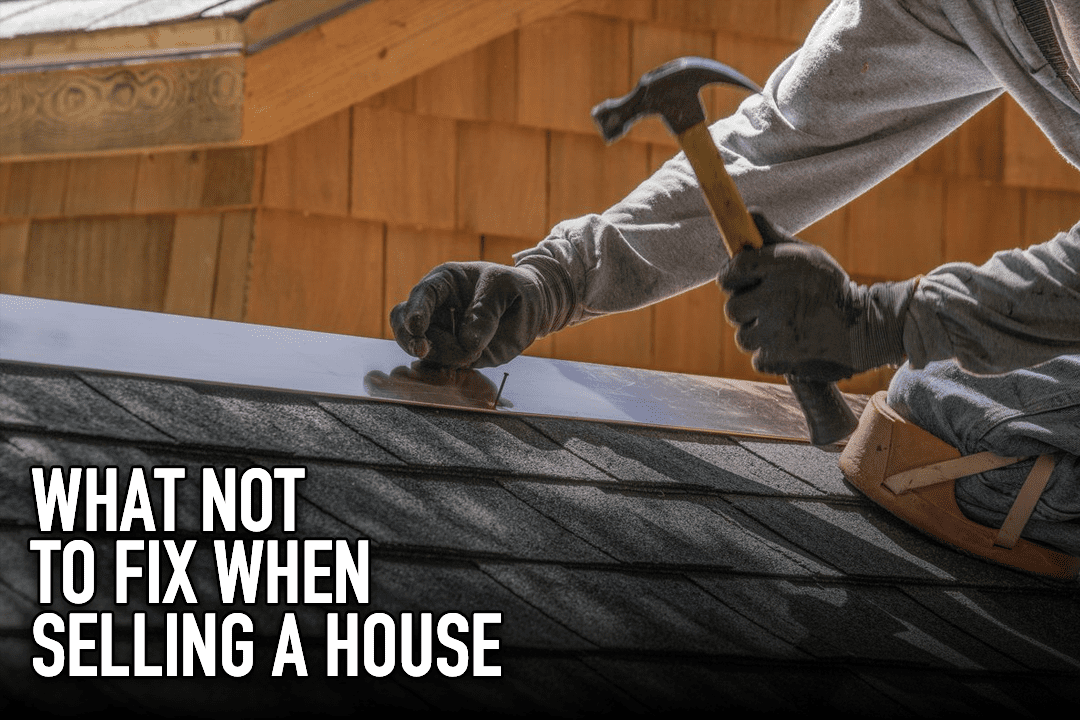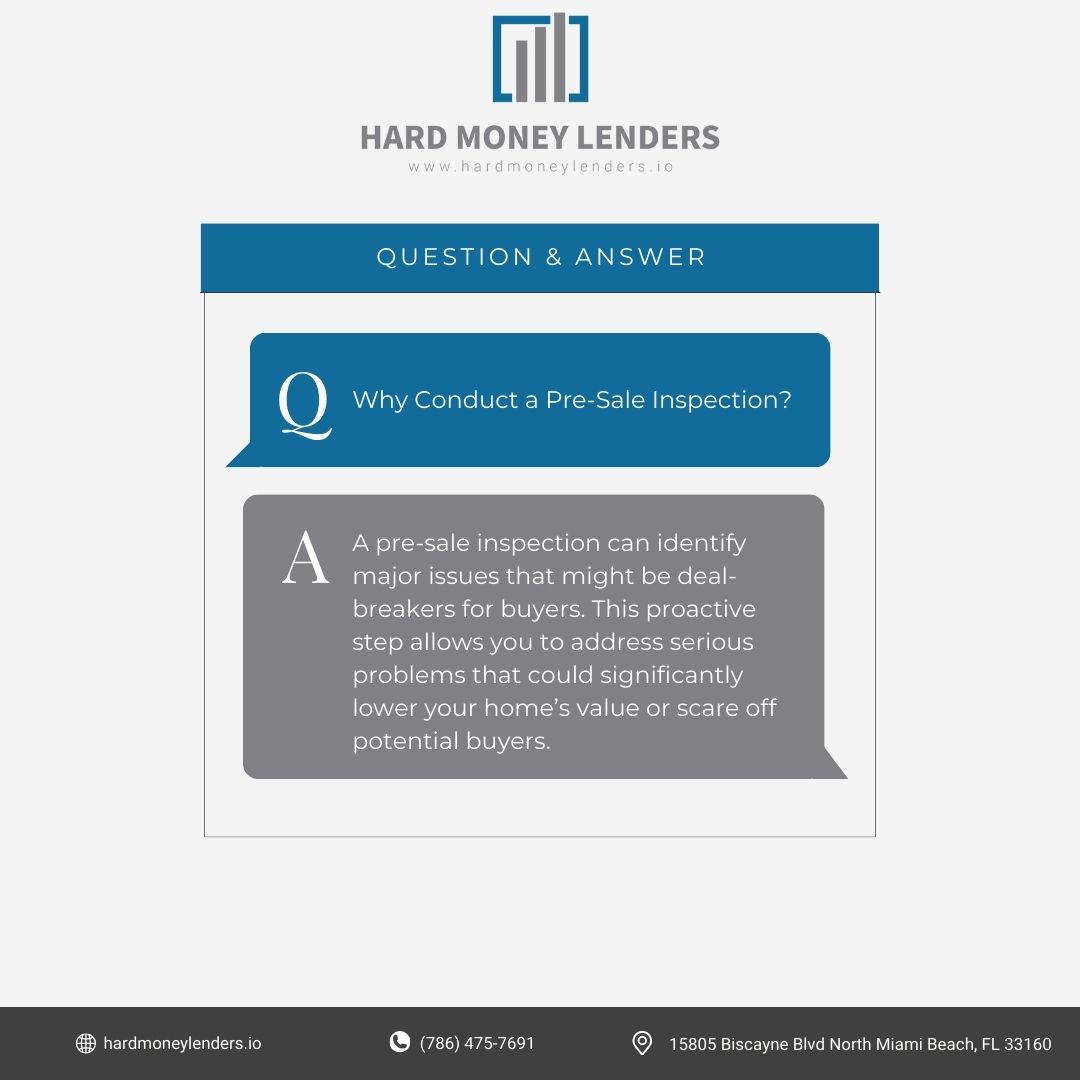What Not To Fix When Selling A House

Selling a house can be a time-consuming, and oftentimes overwhelming task. It can also be extremely expensive if you’re planning to fix or replace multiple things before listing your home on the real estate market. After all, your goal is to make your house ready to sell and attract a home buyer as quickly as possible. But, is updating your home worth the effort and cost? To help you decide which home improvement projects are worth taking on and which are not, here’s a list of what not to fix when selling a house.
What Not To Fix When Selling A House

Believe it or not, investing a lot in improving your home’s condition before selling it is not always a smart idea. You may end up spending much more than you gain in added value. Keep in mind that factors that make a home unsellable are often the ones that cannot be changed. These could be the house’s location, limited square footage, very low ceilings, lack of parking space, absence of a backyard, a faulty floor plan, or poor architecture. These are also often the most common reasons for a property not to be sold. You cannot upgrade such flaws away no matter how hard you try. And, cosmetic changes do not always make too much of a difference anyway.
So how do you decide what not to fix when selling a house? Well, we have a list of projects that can be avoided at the time of a traditional sale. But, before you go ahead, we recommend always consulting with an experienced real estate agent. They will prevent you from overspending on upgrading things that don’t make a difference to your home’s value.
Keep in mind that every home, neighborhood, and real estate market is entirely different. What works in one neighborhood could be a waste of time and money in another.
Another question to ask yourself before making any changes is, will you recoup your remodeling cost? Well, it depends on your location. For example, if you plan a major project such as a kitchen remodel in a neighborhood, you may only get back half of what you spend. But in some other areas, upgrading the kitchen may be an absolute must if you’re unwilling to accept a lowball offer.
It’s best to consult your local realtor to evaluate your home’s value, compare the properties in the area, and calculate the return on investment (ROI) to see if the renovation makes financial sense. Remember that if your property has a major, unfixable flaw, there might not be a point in spending unnecessarily on an expensive renovation in the hope of regaining its lost value.
With that being said, there are absolutely some things you should avoid spending your money on. Here are some fixes and upgrades that, according to most realtors, are best skipped at the time of selling your house.
1. Cosmetic problems
In every house, normal wear and tear such as minor cracks, scratches in tile flooring, marks on the walls, or an outdated bathroom vanity are to be expected. Unless there’s a serious issue or a cause for concern, there’s no need to do anything about it.
When deciding which cosmetic issues to address, you should consider the amount of time and money they’ll take to fix. Instead of investing a huge amount in such upgrades, you may be better off lowering your sale price accordingly.
2. Making partial room upgrades
If your bathroom sink faucet is dripping or the kitchen countertop looks dated, it’s better to simply let it be, unless you’re willing to remodel the whole kitchen and bathroom, which most would consider an even worse idea.
Keep in mind that a partial remodel never looks good. Plus, you end up not adding any significant value. What’s more, it may look as if you’re trying to hide a flaw rather than just updating it. And, that brand-new granite countertop will only highlight the older kitchen cabinets.
3. Repairing driveway or walkway cracks
While most real estate agents recommend improving your curb appeal to increase the home’s resale value, keep in mind that improving curb appeal doesn’t mean fixing superficial cracks and holes.
Trust us, a driveway hairline crack isn’t going to scare off a potential home buyer.
4. Fixing minor electrical issues
Minor electrical issues can also be overlooked when deciding what to fix before selling your house. Unless you have exposed wires, sparking outlets, or dangling light fixtures which need your urgent attention, you can skip minor electrical issues such as a loose electrical socket or a non-functioning light switch. Most home inspections don’t even mention such minor problems.
5. Don’t Overhaul Your Landscaping
Real estate agents often emphasize the importance of curb appeal when selling a home, so you may be tempted to give your yard a major makeover. However, a complete tear out and remodel can cost between $10 – $40 per square foot.
That’s a lot of money to spend on a good first impression, especially when there are many easy ways to boost your home’s curb appeal. Trimming trees and bushes, cleaning up dead leaves, and mowing the grass are all good places to start. After that, head to your local garden store for colorful plants to add some pop to the walkway.
6. Repainting in trendy colors
Do not paint your walls in bright colors that can be jarring. These color trends disappear as quickly as they appear. Plus, they might not appeal to potential buyers anyway.
If you are insistent on painting to refresh the look of your rooms, it’s best to use neutral colors. Keep in mind that the buyer will want to paint the house in hues they like.
7. Dealing with building code issues
While building code issues in older homes can cause problems, there’s no point in spending thousands of dollars in getting your home up to code standards. The home inspectors will address all the building code items or any water damage issues in the inspection reports. The buyer can upgrade the house to current standards, later.
8. Replacing removable items
There’s no requirement to replace something that can be easily removed. So if your window treatments and window valances are old, it’s better to take them down than replace them altogether.
Keep in mind that the average cost of window treatments is around $715. Why bear the extra cost, when the new occupant may want to customize their home décor according to their liking?
9. Getting rid of old appliances
Similar to furniture and decor, there’s no need to replace older appliances unless they are broken or truly are an eyesore. If you do decide you need to replace the appliances before you move, you can save some cash and buy newer and better-looking but used appliances. You don’t need to splurge on state-of-the-art and brand new appliances when you can find gently used ones on Craigslist and Facebook Marketplace for a fraction of the price. The buyers aren’t expecting brand spanking new appliances anyways.
10. Don’t Replace Your Roof
The roof is one of the most important aspects of any home, so you want to replace yours when it shows signs of age. However, you aren’t required to replace your roof when you put your house up for sale.
You are, however, required to disclose leaks and prior damage in most states, so it’s best to be upfront about any issues. This may mean you have to make minor repairs or even discount the cost of a new roof to close the deal, but that’s definitely better than being sued down the road. But in a seller’s market, buyers may be more willing to deal with a less-than-perfect roof in order to buy in the area they want.
11. Renovating beyond your neighborhood’s norm
A house that fits in perfectly in its area fetches a better price. For example, if all the houses in your neighborhood are beautifully furnished and landscaped, then a similar home improvement project can be worth the extra cash. But if your house looks a little too much for the neighborhood, with a beautiful lawn and expensive bushes, you may not get the ROI you’re hoping for.
The Importance of a Pre-Sale Inspection When Selling a House
Why Conduct a Pre-Sale Inspection?
A pre-sale inspection can identify major issues that might be deal-breakers for buyers. This proactive step allows you to address serious problems that could significantly lower your home’s value or scare off potential buyers. Knowing about these issues beforehand can help you decide which repairs are worth making to facilitate a smoother sale.
What to Expect in a Pre-Sale Inspection
A pre-sale inspection typically covers critical areas of your home, such as the roof, foundation, plumbing, electrical systems, and HVAC. Here’s a breakdown of what each area entails:
- Roof: Inspectors will check for missing or damaged shingles, leaks, and the overall condition of the roof. Addressing these issues can prevent water damage and other costly repairs.
- Foundation: The inspection will look for cracks, settling, or other signs of structural problems. Foundation issues can be expensive to fix and are often a red flag for buyers.
- Plumbing: This includes checking for leaks, water pressure issues, and the condition of pipes and fixtures. Plumbing problems can lead to water damage and mold, which are major concerns for potential buyers.
- Electrical Systems: Inspectors will assess the safety and functionality of the electrical wiring, outlets, and panels. Ensuring that your electrical system is up to code can prevent fire hazards and costly repairs.
- HVAC: The heating, ventilation, and air conditioning systems will be evaluated for efficiency and condition. A well-functioning HVAC system is crucial for maintaining a comfortable living environment.
By identifying these issues early, you can choose to fix critical problems and potentially avoid costly last-minute repairs. Minor issues uncovered during the inspection can often be negotiated during the sale, saving you from unnecessary pre-sale repairs and helping you focus on what truly matters to buyers.
Benefits of a Pre-Sale Inspection
- Informed Decisions: Knowing the condition of your home helps you make informed decisions about necessary repairs and pricing.
- Negotiation Power: Addressing major issues before listing your home can give you leverage in negotiations with buyers.
- Transparency: A pre-sale inspection report can provide transparency, building trust with potential buyers and speeding up the selling process.
- Fewer Surprises: By identifying problems early, you can avoid surprises that might arise during the buyer’s inspection, which can derail the sale.
Prioritize Safety Over Cosmetic Fixes
Addressing Safety Hazards
When preparing your home for sale, addressing safety hazards should be your top priority. Issues like broken stairs, faulty electrical wiring, or leaking gas lines pose significant risks to potential buyers. These problems not only endanger the occupants but also can cause your home to fail a buyer’s inspection, potentially derailing the sale. Ensuring these hazards are fixed is essential for both legal and ethical reasons, as sellers are often required to disclose known safety issues.
Key Safety Hazards to Address
- Broken Stairs: Repair or replace any damaged steps and ensure handrails are secure. Falls due to unsafe stairs are a common cause of injury.
- Faulty Electrical Wiring: Hire a licensed electrician to fix any wiring issues. Faulty wiring can lead to electrical fires, which are a severe risk to the property and its inhabitants.
- Leaking Gas Lines: Gas leaks are extremely dangerous, posing risks of fire or explosion. Have a professional inspect and repair any leaks immediately.
By focusing on these critical safety concerns, you protect future occupants and increase the likelihood of a successful home sale.
Balancing Safety and Aesthetics
While safety is paramount, it’s also essential to balance these necessary repairs with aesthetic updates. Cosmetic fixes, such as painting walls or updating fixtures, can enhance your home’s appeal but are less critical than ensuring the property is safe.
Prioritizing Tasks
- Safety First: Address any safety hazards before considering cosmetic updates. Ensuring a safe living environment should be the main goal.
- Essential Repairs: After safety issues, focus on repairs that affect the home’s functionality, like fixing plumbing leaks or repairing HVAC systems.
- Cosmetic Updates: If budget and time allow, make minor cosmetic improvements that can enhance the visual appeal without significant costs. Simple tasks like cleaning, decluttering, and making small aesthetic changes can still make a positive impact.
By focusing on essential safety repairs first, you not only protect the future homeowners but also increase the marketability of your property, as potential buyers will appreciate a home that is safe and move-in ready.
Alternative Selling Strategies
Selling As-Is
Selling your home “as-is” can be a viable option, especially if you want to avoid the hassle and expense of extensive repairs. In this scenario, you list your home without making any repairs or improvements, and buyers understand they are purchasing the property in its current condition.
Benefits of Selling As-Is
- Saves Time and Money: You avoid the costs of repairs and renovations, and the home can be listed more quickly.
- Appeals to Investors: Many buyers looking for as-is properties are investors or flippers who plan to renovate the home themselves. They often see the potential value and are willing to undertake the necessary work.
- Attracts Bargain Hunters: Some buyers are specifically looking for as-is homes to get a better deal and are willing to take on the work themselves.
Cash Buyers
Targeting cash buyers can be advantageous, especially for homes sold as-is. Cash buyers often include investors and individuals who do not need mortgage approval, making the transaction smoother and faster.
Advantages of Cash Sales
- Faster Closings: Cash transactions can close more quickly since there’s no need to wait for mortgage approvals or appraisals.
- Fewer Contingencies: Cash buyers are typically less concerned with the home’s condition and more flexible regarding repairs and inspections.
- Reduced Risk of Deal Falling Through: Without the need for financing, there is a lower risk of the sale falling through due to loan issues.
Final Thoughts on What Not to Fix When Selling a House
If you think you’ll get multiple offers because your home looks straight out of a magazine cover, think again. It might not always be true. A potential home buyer will be more concerned about the convenience the place offers rather than its aesthetics.
You, as a home seller, may be familiar with your house’s flaws but the homeowner might not be bothered by them. So, instead of getting overwhelmed when preparing your home for sale, it’s best to skip unnecessary upgrades and home repairs. Your goal should be to showcase your home’s true potential, not make it look too perfect.
Knowing what not to fix when selling a house isn’t always clear cut. Market conditions can have a major influence on how homebuyers react to what you’re offering, which is why it’s important to work with a licensed professional. A local agent deals with the real estate market every day and can help you decide what repairs are truly necessary.

Yuval Elkeslasi is a distinguished professional in the finance industry, celebrated for his pioneering strategies and significant contributions as the leader of Hard Money Lenders IO. Hailing from Queens, New York, Yuval has built an impressive career, transforming the lending landscape through his expertise and visionary approach. Yuval Elkeslasi
attended Florida State University, where he obtained a bachelor’s degree in Finance. This academic foundation provided him with the necessary skills and knowledge to thrive in the competitive financial arena. Yuval’s tenure at Hard Money Lenders IO is marked by numerous pioneering accomplishments. He has introduced a variety of loan programs designed to cater to specific client requirements, including fix and flip loans, new construction financing, cash-out refinancing, rental property loans, and specialized financing for luxury items like yachts. Among Yuval’s significant achievements is securing an $8 million construction loan for a spec home builder in Port Royal, Naples. He also orchestrated the financing for a prestigious 72’ 2024 Viking Convertible yacht valued at $7.2 million. These transactions demonstrate Yuval’s adeptness at navigating complex financial landscapes and delivering exceptional results.


